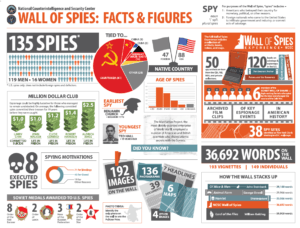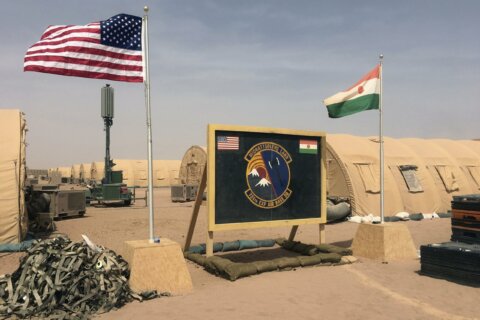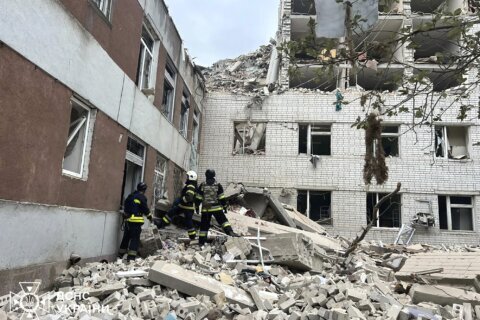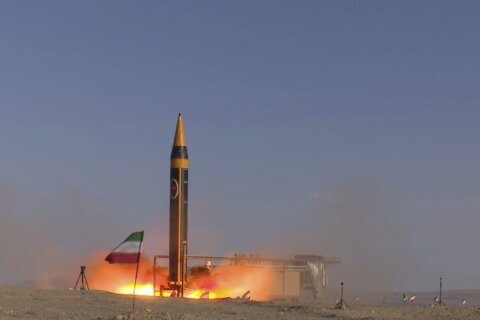Against the backdrop of a growing wave of espionage cases involving American traitors, the National Counterintelligence and Security Center (NCSC) has taken the wraps off its latest weapon to combat the threat — public shaming.
At its secure offices at the Intelligence Community Campus in Bethesda, Maryland, the NCSC unveiled the “Wall of Spies Experience” museum on Tuesday.
The faces of over 135 spies who betrayed America from the Revolutionary War to the 21st Century are depicted, including Benedict Arnold, the nation’s first traitor in Colonial times, and the most damaging turncoats of modern times — Aldrich Ames, Robert Hanssen and Edward Snowden.
The exhibit — supplemented by items on loan from the CIA, FBI, NSA and private collections — also features some of the ingenious tools used by American traitors and other nations.
Among them are a typewriter that was bugged at the U.S. Embassy in Moscow in the 1970s, the laptop used by an American engineer to spy for China in the early 2000s, and even a World War II-era German Enigma cipher machine.
The unveiling comes at a critical time in U.S. history. NCSC Director William Evanina and other intelligence community (IC) leaders have repeatedly told WTOP that the nation is in the throes of an unprecedented surge in espionage efforts, much of it emanating from Chinese intelligence.

“Just last week,” Evanina said, “former DIA analyst Ron Hansen was sentenced to 10 years in federal prison for attempted espionage for China.”
And in the past two years alone, he said, “five current or former U.S. officials have been convicted of working with the intelligence services of China to betray America.”
Asked why such an exhibit is tucked away inside a facility to which the public has no access, Evanina said that there is a virtual element for the public to see, but that the display is primarily a history lesson and a warning for intelligence community (IC) personnel.
“This is a daily reminder for not only our employees, but [IC] employees who come here every day that this is what we do every single day. This is why we do it. We’re in the counterintelligence business to prevent this.”
NCSC Executive Director Patricia Larsen leads the museum project, which includes an online component. The effort is designed to paint a picture of the challenge that the IC faces day in and day out, she said.
“We’re not trying to celebrate any of the people on the wall,” Larsen said. “We’re not saying it’s a colossal success that we’ve caught them or failure that we didn’t catch them faster. What we’re saying is it’s part of our history, and we need to understand where we stand to be better able to protect ourselves moving forward.”
The museum is also a key part of the IC’s effort to be transparent about their work.
“It’s important for people to understand that we don’t run around in trench coats. It’s not about the old-fashion espionage that you see. It’s about us being open and honest about how we protect America, and this is part of our effort to do so,” Larsen said.
The gallery is located in the building that houses the nation’s premier source for counterintelligence and security expertise, and where the senior leadership from every U.S. intelligence agency has to come for high level meetings.
And because the exhibit happens to be conveniently located near the meeting rooms, it provides another opportunity to drive home the point about the peril of spying to U.S. government employees.








